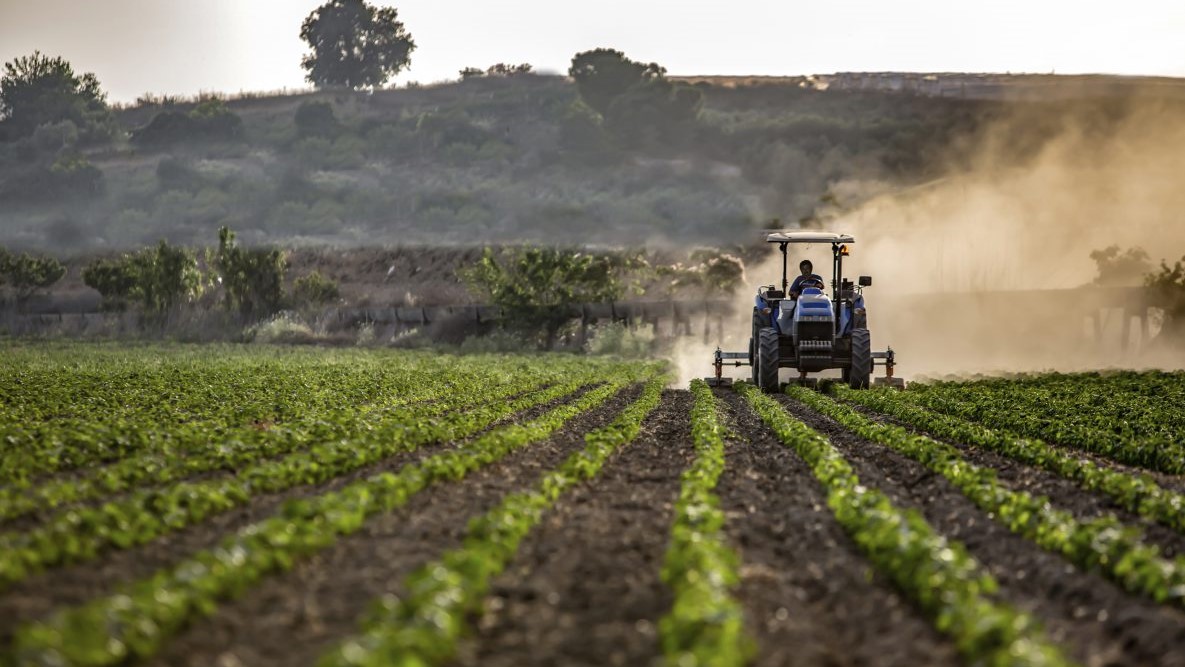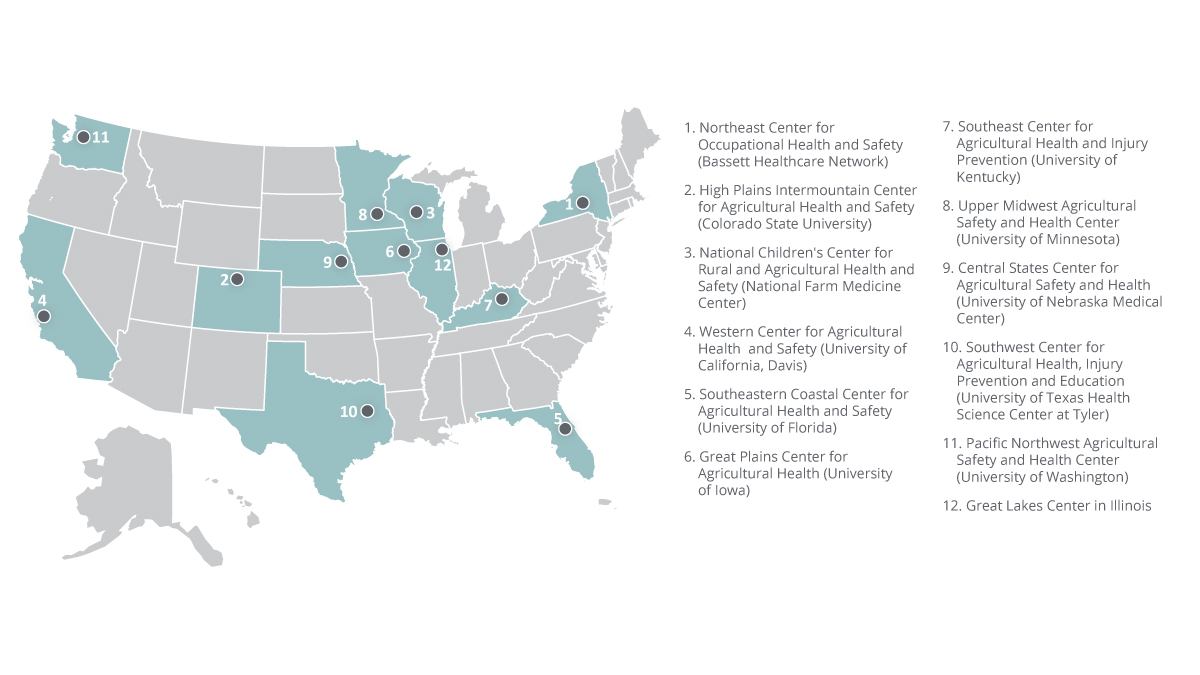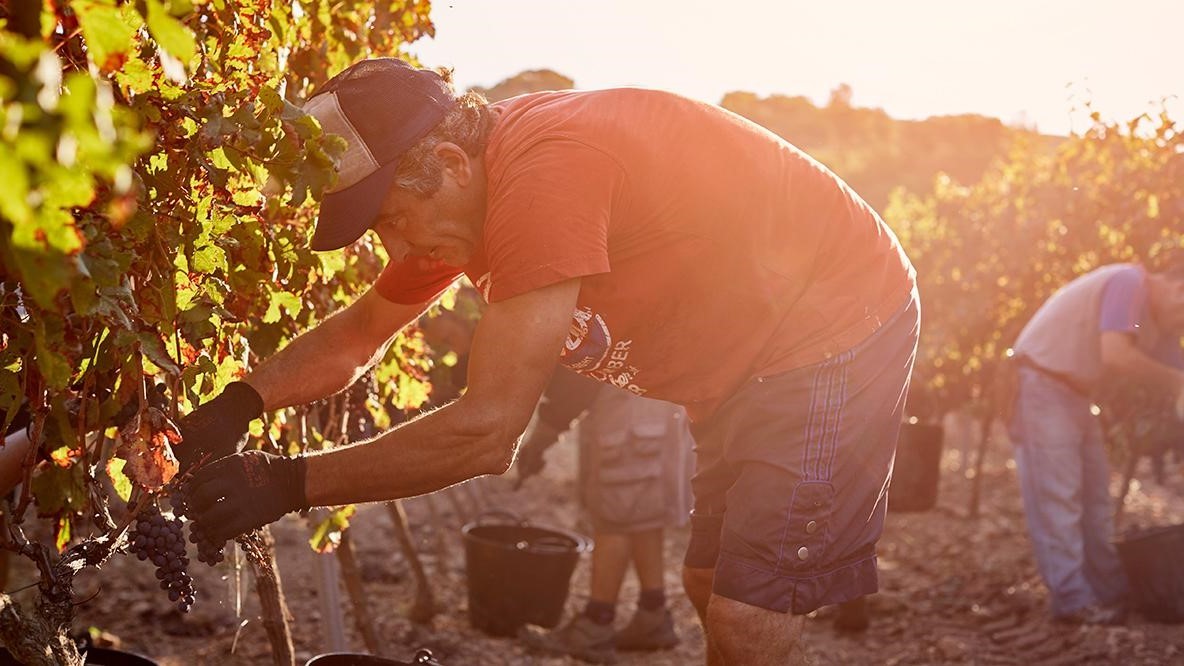Key points
- 12 Centers for Agricultural Safety and Health address occupational safety and health in the agriculture, forestry, and fishing sector.
- Centers conduct research, education, and prevention projects through cooperative agreements.
- Centers are located across the U.S. to be responsive to unique regional safety and health needs.

Overview
The Centers for Agricultural Safety and Health address pressing health and safety problems in the agriculture, forestry, and fishing (AgFF) sector. NIOSH funds 12 Centers through cooperative agreements to conduct research, education, and prevention projects.
NIOSH established the Agricultural Centers in 1990 as part of an Agricultural Health and Safety Initiative. AgFF workers continue to experience the highest fatal injury rate of all industries. In 2022, there were 18.6 deaths per 100,000 full-time workers, compared to 3.7 deaths per 100,000 workers for all U.S. industries.
Eleven of the Centers work on a range of agricultural health and safety topics. The National Children's Center for Rural and Agricultural Health and Safety has a more specific mission. It addresses the needs of children and families who live and work on farms across the country.
Centers

- Northeast Center for Occupational Health and Safety at Basset Healthcare Network in Cooperstown, NY.
- High Plains Intermountain Center for Agricultural Health and Safety at Colorado State University.
- National Children's Center for Rural and Agricultural Health and Safety at Marshfield Clinic Research Institute in Marshfield, WI.
- Western Center for Agricultural Health and Safety at the University of California, Davis.
- Southeastern Coastal Center for Agricultural Health and Safety at the University of Florida.
- Great Plains Center for Agricultural Health at the University of Iowa.
- Southeast Center for Agricultural Health and Injury Prevention at the University of Kentucky.
- Upper Midwest Agricultural Safety and Health Center at the University of Minnesota.
- Central States Center for Agricultural Safety and Health at the University of Nebraska Medical Center.
- Southwest Center for Agricultural Health, Injury Prevention and Education at the University of Texas Health Science Center at Tyler.
- Pacific Northwest Agricultural Safety and Health Center at the University of Washington.
- Great Lakes Center for Farmworker Health and Well-being at the University of Illinois Chicago.
Program priorities
- Develop and conduct research related to the prevention of occupational disease and injury in the AgFF sector.
- Develop and implement model educational outreach, and intervention programs promoting AgFF health and safety.
- Develop and implement model programs for the prevention of illness and injury among AgFF workers.
- Evaluate AgFF injury and disease prevention and educational materials and programs implemented by the Centers.
- Provide consultation and/or training to those in a position to improve the health and safety of AgFF workers. This includes researchers, health and safety professionals, graduate/professional students, and agricultural extension agents and others.
- Develop linkages and communication with other governmental and non-governmental bodies involved in AgFF health and safety. NIOSH places special emphasis on communications with other CDC/NIOSH sponsored programs related to agriculture, forestry and fishing.

Activities and progress
Annual Reports
Central States Center for Agricultural Safety and Health
Great Lakes Center for Farmworker Health and Wellbeing
Great Plains Center for Agricultural Health
High Plains Intermountain Center for Agricultural Health and Safety
National Children's Center for Rural and Agricultural Health and Safety
Northeast Center for Occupational Safety and Health
Pacific Northwest Agricultural Safety and Health Center
Southeast Center for Agricultural Health and Injury Prevention
Southeastern Coastal Center for Agricultural Health and Safety
Southwest Center for Agricultural Health, Injury Prevention, and Education
Upper Midwest Agricultural Safety and Health Center
Western Center for Agricultural Health and Safety
Collaboration
Centers collaborate on national events and projects, including the Centers' YouTube channel. The Centers also work with the NIOSH AgFF Program on topics such as
Funding sources
The cooperative agreement for the Centers historically runs in five-year cycles. The current cooperative agreement under RFA-OH-22-002 has a project cycle from 2022-2026. Previously, NIOSH funded Centers from 2016-2021 under PAR-15-353.
